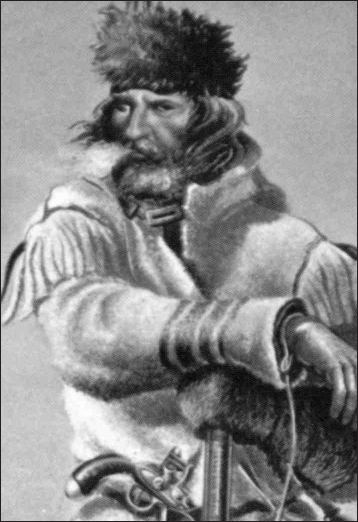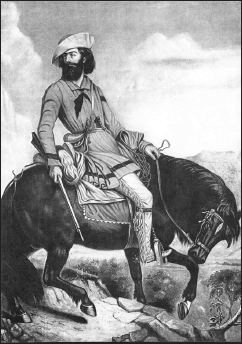
Copyright 2013, 2017 by Stephen Brennan
All Rights Reserved. No part of this book may be reproduced in any manner without the express written consent of the publisher, except in the case of brief excerpts in critical reviews or articles. All inquiries should be addressed to Skyhorse Publishing, 307 West 36th Street, 11th Floor, New York, NY 10018.
Skyhorse Publishing books may be purchased in bulk at special discounts for sales promotion, corporate gifts, fund-raising, or educational purposes. Special editions can also be created to specifications. For details, contact the Special Sales Department, Skyhorse Publishing, 307 West 36th Street, 11th Floor, New York, NY 10018 or .
Skyhorse and Skyhorse Publishing are registered trademarks of Skyhorse Publishing, Inc., a Delaware corporation.
Visit our website at www.skyhorsepublishing.com.
10 9 8 7 6 5 4 3 2 1
Library of Congress Cataloging-in-Publication Data is available on file.
ISBN: 978-1-5107-1904-0
eBook ISBN: 978-1-5107-1909-5
Printed in the United States of America
CONTENTS
W. F. Wagner
Franois Antoine Larocque
with the Lewis and Clark Expedition
Journals
John Bradbury
from The Adventures of Captain Bonneville
Washington Irving
from The Splendid Wayfaring: Jedediah Smith and the Ashley-Henry Men
John G. Neihardt
from The Merry Mountain Man
Stanley Vestal
from Narrative of the Adventures of Zenas Leonard
Himself
from Journal of a Trapper
Osborne Russell
from The Life and Adventures of James P. Beckworth
Himself
Francis Parkman Jr.
Grenville M. Dodge
William Frederic Bad
Miscellaneous Iron Tools and Weapons that Went into the West
from Firearms, Traps, and Tools of the Mountain Men
Carl P. Russell

I NTRODUCTION
And the devil, taking him up into a high mountain, showed unto him all the kingdoms of the world in a moment of time.
Luke 4:5
Bring me men to match my mountains,
Bring me men to match my plains,
Men with empires in their purpose,
And new eras in their brains.
Sam Walter Foss
The Coming American
It is one thing to wander out upon the plains or to tramp the sea side, and you may trod the glens and dales, or trek the rolling hills, and there encounter so many adventures that you finish up flushed with pleasure, well pleased with your lifes sojourn among your fellow flatlanders. But going up into the mountains is a very different thing altogether. And though we recognize the mountains as wild places of mystery and of power, of danger and of extremes, their allure has always been undeniable.
Mountains figure greatly in many of the foundational stories of our culture. Where does Moses go to receive Gods laws? Why, to the mountaintop. When Abraham is given to understand that God requires he sacrifice his son, Isaac, where must the deed be done? When Noahs Ark finally does come to rest on dry land, it is on a mountain. When Jesus himself is tempted by Satan, where does this take place? And then at last, when Jesus most clearly explains his New Covenant to those that have ears to hear, it is in his Sermon on the Mount.
We do well to recognize that mountains are also a place of refuge for all manner of escapees, loners, hermits, holy men, felons, psychopaths, and dreamers. Because to be a man of the mountains, then or now, is to not only live a life of independence and adventure, but also to partake of a state of mind. Given all this, it is little wonder then that the mountain man continues to have such a hold on our imaginations.
In American history, the classic or golden era of the mountain man lasted roughly for a generation: from 1810, when Americans began to get themselves organized to take advantage of the natural resources the Louisiana Purchase had made availableparticularly the abundant and portable beaver peltuntil about 1840 when that animal had been largely trapped out. But even after the last great meet-up, the final rendezvous, something of that way of life persisted. The demand for beaver may have been obviated by the recent availability of silk for headwear, but still the mountains beckoned, as they had always beckoned. There were minerals and other resources to be hadgold in them thar hills. With the conclusion of the MexicanAmerican War and the 1846 Oregon Treaty with the British, the United States had extended itself all the way to the Pacific coast. There followed various military expeditions of exploration, and the establishment of the great trails west. Now the trappers of earlier days found work as army scouts, hunters for mining concerns (and later for railroads), and as guides for the several great wagon train migrations.
The whole literature of the mountain men is immense, and well beyond the scope of this book, but even so, this anthology offers a sampling of some of the best of the stories, journals, and texts. W. F. Wagners The Trappers offers as colorful and concise an overview of the whole of his saga as any enthusiast might desire, just as John C. Neihardts Jed Smith and the Ashley-Henry Men is a story of exploration, adventure, and a partnership, out of which a determined cadre of businessmen/survivalists made a life and sought their fortunes in a wild and difficult world. With Bradburys Coulters Run , Meeks The Merry Mountain Men , Zenas Leonards Adventures , and Trouble in the Family by James P. Beckworth, we glimpse the mountain man as outlandish iconoclast, outsider, braggart, clown, and Gods very own fool. With the excerpts by Washington Irving from his Adventures of Captain Bonneville and from the Journals of Lewis and Clark , we apprehend the mountain man as mapmaker, explorer, and soldier. With Francis Parkman Jr.s A Mountain Hunt we have the mountain man and his signal way of life as rendered by, essentially, an Eastern tourist, scion of the house of one of Bostons oldest clans. Implicit in Parkmans telling is the intense attraction of our wild man and his extreme, extraordinary way of life, even to a scion of privilege, one of Bostons bluest Brahmin families. With Grenville M. Dodges biographical monogram on Jim Bridger we see the opposite of the man from the mountains as half-crazed wild man. Here is Bridger, tamed, honest, trustworthy, a businessman, a pillar of the community. Finally, we have Fredric Bades rendering of John Muirs meditations on the first of his Rocky Mountain adventures. With Muir the mountain man has come full circle. He most definitely fits the type of self-sufficient loner that weve come to recognize as one foundational trait of the mountaineers character, but his aim has changed. It is really because of Muirs lifelong work as a naturalist and environmentalist that we now have come to regard the great western mountains as something not so much to be despoiled and plundered as to be protected and enjoyed. Just as a matter of personal privilege, Ill admit that my favorite of these texts are those having to do with the minutiae, the how-to of the mountain trapper and his way of life.
The illustrations in this book are largely contemporaneous with the mountain men and their times here portrayed. The aim is to afford the reader an opportunity to get some understanding of the popular view of this ordinary, extraordinary, romantic, comical, independent, very American type.


















